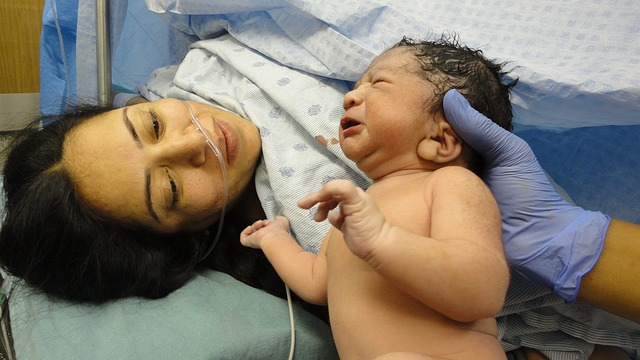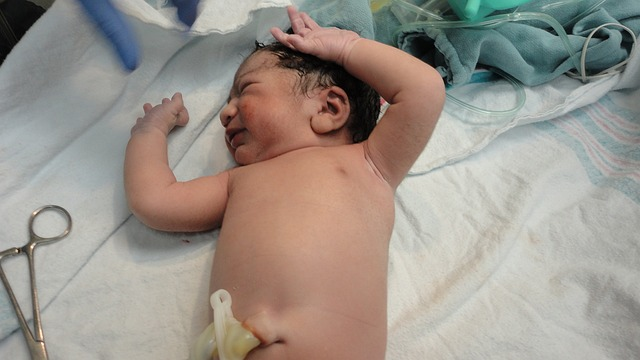Of the many struggles of pregnancy, childbirth is perhaps one of the most difficult. The procedure itself is painful and very tiring, and it carries some risks of complications. Fortunately, modern medicine has helped reduce the rate of maternity deaths due to childbirth, but even then the process is no walk in the park. A lot of people admit that suffering during delivery is inevitable and that there is nothing you can do about it.

However, there are many approaches by which you can prepare for childbirth. These tips and tricks may have little effect individually, but their benefits can add up to make your delivery less of a hassle. This article lists down some methods you can do to prepare yourself physically and mentally. Make sure to always consult with your doctor, who can help you choose the most effective techniques for you and even recommend new ones you can try.
Choosing The Type Of Birth
Whether you give birth naturally or through cesarean section with an obstetrician is one of the most significant factors affecting your experience of childbirth. In general, natural birth is less costly, less invasive, takes a lesser toll on your body, and allows you to recover faster. However, there are times when a cesarean section with a trusted obstetrician may be more applicable, especially if you have a condition that can interfere with natural birth.
In some cases, the decision rests solely on your doctor, especially if natural birth would endanger you or your child. However, in many cases, you can discuss your options. Make sure to find the time to hold this discussion months before you give birth so that you can prepare accordingly. According to Maria Onedia, MD, “A birth plan is a great way to ensure everyone on your care team is on the same page when the time comes for you to give birth. Creating your birth plan can also help you learn more about your birthing options.”

Childbirth Courses
Every year more and more obstetricians and medical institutions offer childbirth courses, which are specifically designed to make childbirth more manageable and less dangerous. Jane Leach, PhD, RNC, IBCLC and co-authors say, “Many women choose to attend childbirth education classes during pregnancy to prepare for this life-changing event.” You will learn more about the exact mechanisms of delivery in these classes. The instructors will teach you the common complications, as well as how to handle each one correctly. Pain management and relaxation techniques are also usually taught in these classes. Finally, they will show you the importance of a support system as well as how your friends and family can help out.
These courses usually come in two variants. Lamaze classes are observed to focus on developing confidence and mental willpower to go through childbirth. Bradley classes, on the other hand, observes childbirth as a process that occurs naturally. While the philosophies of these two approaches may differ, they both teach methods of promoting comfort and remaining relaxed even while experiencing the painful contractions of childbirth.
Make sure to do some research to be sure that you are getting these classes from a reputable source. While it is preferred to take these classes during your third trimester, feel free to enroll in them anytime before you give birth. Consider whether to take courses at a physical institution or to watch the lessons through prerecorded videos.
Another option is to read books on childbirth. The Laugh and Learn About Childbirth is one of the most recommended book when it comes to giving birth. You can purchase this book from Amazon here.

Physical Preparation
Childbirth involves several muscles in your pelvis and abdomen, which assist your uterus in pushing your baby outside of your body. Strengthening these muscles should help facilitate delivery. Fortunately, some exercises can target the specific muscle groups involved. Pelvic tilts and butterfly stretches can strengthen the muscles in your back, stomach, and pelvis, helping to reduce pain and to speed up recovery. Meanwhile, Kegel exercises strengthen your pelvic floor, a group of muscles that support your internal organs that can get overstretched during pregnancy if they are not strong enough. “You increase your chances for success (of drug-free birth) by being very physically fit,” Ryan Dickerson, M.D. points out.
Doing these exercises also reduces the chances of complications. For example, Kegel exercises help prevent hemorrhoids and urinary incontinence after pregnancy, which can occur if your childbirth weakens the pelvic floor. Like all exercise routines, make sure to consult with your medical professional. You would want to make sure that it is safe for you to do these movements during pregnancy.
It is also worthwhile to learn about the different labor positions you can take up, as each offers its own set of boons and banes. Discuss with your doctor the best options you can consider based on the characteristics of your pregnancy.
Mental Preparation
Many expecting mothers focus only on physical preparation, forgetting that their mental state also affects their experience of childbirth. Having the right mindset can be as powerful as doing the right exercises. The ability to remain calm, obstructed from negative thoughts, and focused amidst all the pain is useful in maintaining your mental well-being. Being calm also helps you focus on pushing your newborn child into the world.
Fortunately, there are ways to develop the capacity to remain calm. Strangely enough, a physical exercise such as yoga can do just that. By helping you practice self-control and meditation, yoga can ultimately help you maintain your composure throughout childbirth.
A great antidote to fear is knowledge. Fear becomes more manageable if you are aware of what will happen. Hence, research more on childbirth and try to get the testimonials of mothers who have given birth before. By educating yourself on what to expect in delivery, it becomes easier to prevent fear and panic from taking control of your mind.
Try to remain positive during childbirth, as positivity has been shown to obstruct sensations of pain. Find an activity that can help you keep your positive mood. Many mothers swear by listening to soft music, while others like to have a light conversation with their loved ones to obscure negative thoughts. Some medical centers offer birthing rooms that look more like a nursery than a hospital room. Many mothers observe that this setting helps calm them down. Always communicate with obstetricians on the availability of these options. Make sure that both you and your doctor are on the same page so that you can work together to make childbirth as uncomplicated as possible.
Summary
Childbirth is a painful process that many people fear. That fear is reasonable because of the small but significant risk that the procedure carries. However, childbirth is also one of the most important acts you will ever make. Bringing a live person into the world is an experience that is sure to be unforgettable. Many mothers look back on childbirth with reverence. Keep that in mind when it’s time for you to bring your child into this world.

Frequently Asked Questions
What is the difference between a gynecologist and an obstetrician?
A gynecologist is focused on taking care of the reproductive health of women. Meanwhile, an obstetrician takes care of pregnant women and delivers the baby. This role of obstetricians can also extend for a time after the baby is born.
What is the job of an obstetrician?
It is the job of an obstetrician to observe and take care of women during pregnancy until the delivery of the baby. These obstetricians are in charge of observing, doing check-ups, and monitoring the baby during pregnancy through tests and ultrasound. Obstetricians also look out for the health conditions of pregnant mothers to prevent complications.
Why do I need to see an obstetrician when pregnant?
It is important to see an obstetrician because obstetricians can guide you throughout the pregnancy. An obstetrician can help in prenatal care to keep you and the baby healthy.
Can you be an obstetrician without being a gynecologist?
You cannot be an obstetrician without being a gynecologist but you can be a gynecologist without being an obstetrician. Obstetrics is the field of childbirth, meanwhile, gynecology deals with women’s reproductive health.
What is a male Gynaecologist called?
A gynecologist is someone who specializes in women’s reproductive health. The counterpart for men’s reproductive health is called a urologist. Urologists diagnoses and treats disorders in the male reproductive system.
When should I see an obstetrician?
You should visit an obstetrician as soon as you learn that you are pregnant. Obstetricians help in prenatal and postnatal care, ensuring that the mother and the baby are both safe and healthy.
What do you call a baby doctor?
An obstetrician is in charge of prenatal and postnatal care of both the baby and the mother, including the delivery. A pediatrician, on the other hand, takes care of the health of the child after birth. They are in charge of diagnosing and treating children’s illnesses.
Does the obstetrician deliver the baby?
Obstetricians deliver the baby. The obstetricians are trained to observe pregnant women and give birth via normal delivery, with epidural, or cesarean sections.
Disclaimer: The information on this site is not intended or implied to be a substitute for professional medical advice, diagnosis or treatment. All content, including text, graphics, images and information, contained on or available through this website is for general information purposes only. Please see a medical professional if you need help with depression, illness, or have any concerns whatsoever. WE DO NOT OFFER MEDICAL ADVICE, COURSE OF TREATMENT, DIAGNOSIS OR ANY OTHER OPINION on your conditions or treatment options. SERVICES OR PRODUCTS THAT YOU OBTAIN THROUGH THIS WEBSITE are for information purposes only and not offered as medical or psychological advice, guidance or treatment.
We also use some affiliate links in this blog to help support continuous production of wholesome parenting content such as this. 🙂 Feel free to use them to show your support.

